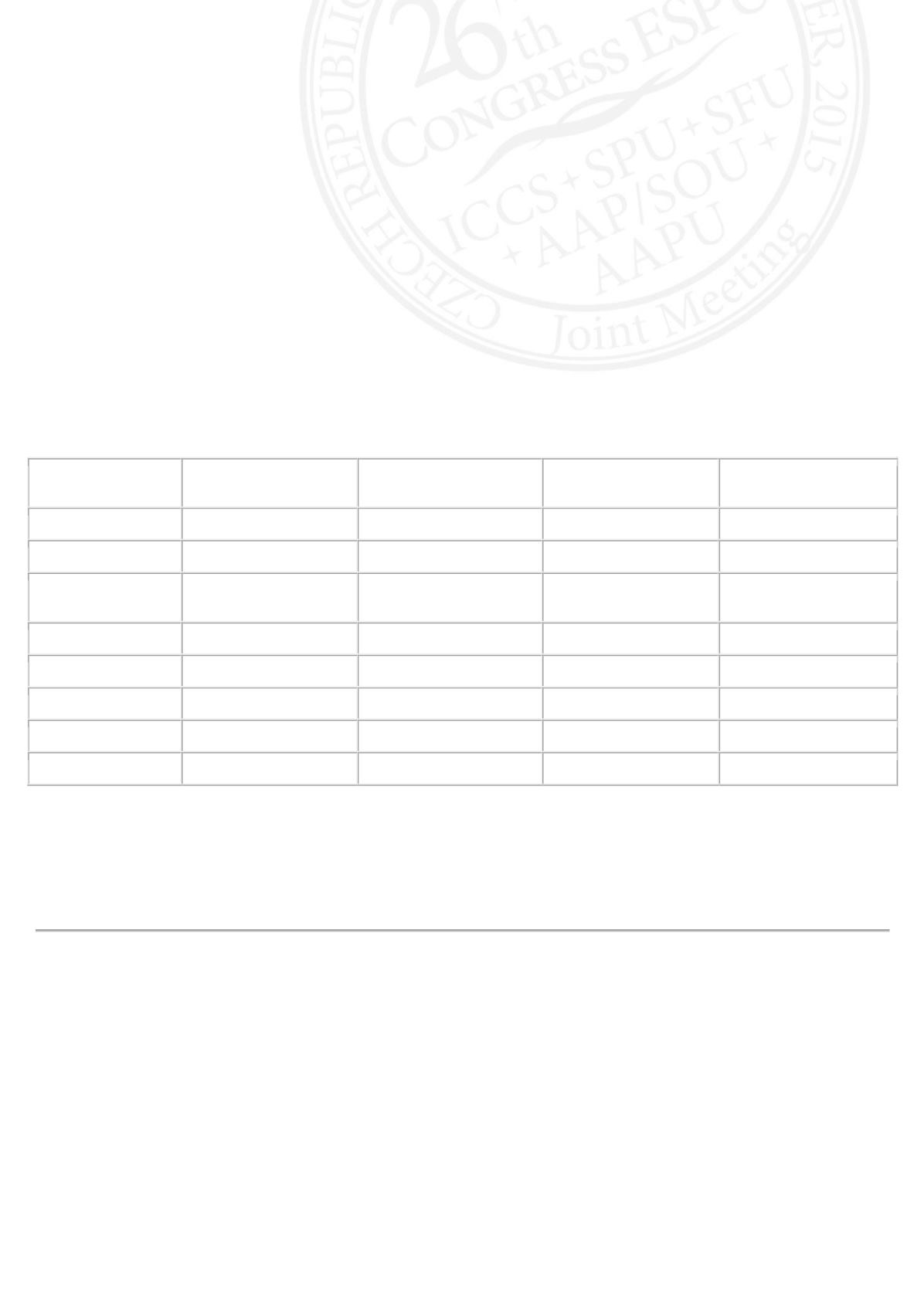

S9-10
(P)
PERCUTANEOUS LITHOTRIPSY (PCNL) IN CHILDREN: A COMPARISON IN
DIFFERENT AGE GROUPS
Sajid SULTAN, Sadaf ABA UMER KODWAVWALA, Bashir AHMED and Syed Adeeb Ul Hassan RIZVI
Sindh Institute of Urology & Transplantation, Philip G. Ransley Department of Paediatric Urology, Karachi, PAKISTAN
PURPOSE
To evaluate and compare the outcome of stone clearance and blood transfusion in four age groups of children who
underwent PCNL.
MATERIAL AND METHODS
We retrospectively reviewed the records of 1078 renal units (RU) of children upto 15 years of age who underwent PCNL
between Jan 2010 and June 2014. Children were divided into four age groups. A: upto 3 years, B: 4 and 5years, C: 6 –
10 years and D: 11- 15 years. Records were reviewed for gender, Pre and Post operative Hb, Serum Creatinine, stone
volume, access site , sheath size, disintegration technology, stone clearance rates, peri and post operative blood
transfusion and complications.
RESULTS
Group A (upto 3
years)
Group B (4
and 5years)
Group C (6 – 10
years)
Group D (11- 15
years)
Renal units
276
195
419
188
M:F
2.9:1
2.36:1
1.64:1
1.89:1
Mean Stone
volume
1.4 ± 0.92 cm2
1.60 ±0.75 cm2
2.42 ±1.80 cm2
2.81 ± 1.58 cm2
Pre-Op Hb (gm%) 10.3 ±1.25
10.7 ± 1.3
11.2±1.21
12.0±1.4
Post op Hb (gm%) 9.8±1.23
10.1±1.25
10.6±1.17
11.2±1.3
Blood transfusion
62 (22.4%)
29 (15%)
46 (11%)
19 (10%)
Stone Clearance
96.2%
91.5%
89%
84%
Complications
16.4%
15.6%
16.2%
14.5%
CONCLUSIONS
PCNL is an effective procedure for stone clearance in all age groups of children. There is a increasing stone burden with
increasing age. Blood transfusion requirement decreases with age as preoperative Hb is relatively better and there is
more allowable blood loss with increasing age.












